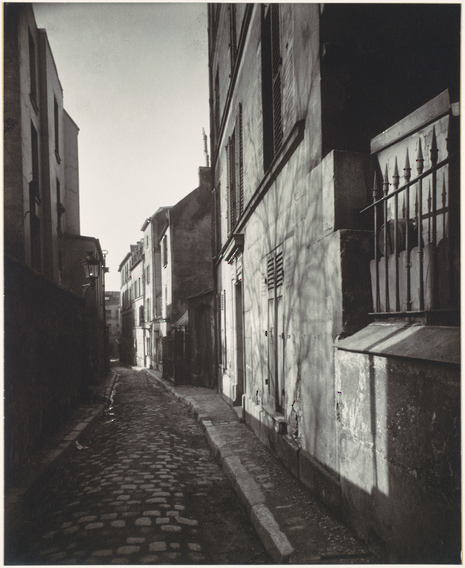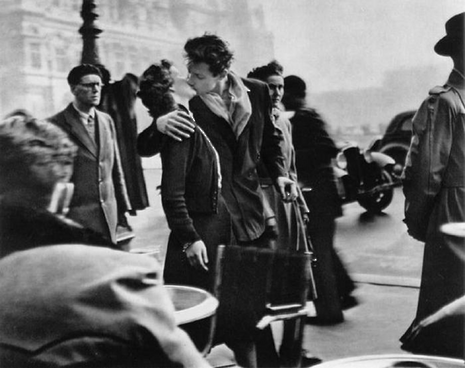Moments as they pass
In his inaugural column on art’s relationship to life, Joseph Krol explores the origins of modern photography and how it can enrich our appreciation of the world around us

The world stands before us in eternal disarray. Every movement seems part of a distant plan, often glimpsed but never truly comprehended. Each idea reels off into new abstractions. Each minute collapses into uncertain nothingness, and, with each day, there seems ever less meaning to cling to.
In short, there is much confusion in all of our lives, and we must deal with this uncomfortable fact as best we can. Perhaps the purest art is too raw, too recondite, too removed for it to be of much use; perhaps it seems folly to retreat into imagination, whether one’s own or that of another’s. I disagree.
In this column, I shall try to show how art can lend us all unique understandings of familiar situations, and ultimately provide a new perspective on life’s procession. I do not claim that it can solve every problem, nor that it really should. Rather, I will attempt to show that its appreciation provides a vital method by which we might interpret and develop.
One might begin with the art inherent in the everyday. As one walks from room to lecture to library to hall, each day similar to the last, it is only too easy to get lost in the drudgery – but if there is any hope for the joy of life, it is in this that we must start. Cambridge is, in so many regards, a beautiful city, and it seems natural to look for something in these quotidian travels that lifts us from the sea of banality.
“In Atget’s shadow there rose a new generation of street photographers, ever-focused on capturing the ‘decisive moment’”
This idea, as with all good ones, is nothing new; the idea of street photography, of capturing moments as they pass, was pioneered by the French photographer Eugène Atget. An unassuming man who only turned to the camera in his middle-age, his entire artistic career was consumed by one project: that of recording these ‘documents’ of traditional Parisian street life, before modernity arrived to destroy it all. During his career, he seemed just another commercial photographer, and it was only posthumously that the true genius of this conception was brought to wider attention.
It might seem difficult to think of Cambridge in the same way. As I write, I see through one window an eleventh-century church, and through another a fourteenth-century court – it seems inconceivable that either could disappear. Of course, in time, they will, but it was not merely bricks and mortar that Atget sought to guard against obsolescence. Through the medium of the camera, he sought to preserve the entire spirit of his times – the sights, the thoughts, the attitudes – by the means of the symbolism of the street. The mood and the setting, the dream and the reality, the past and the future all crystallise to form each iota of time: one that has never come before, nor will ever return.
This obsession with transience recurs among the artists of the fin de siècle. One might compare it with Cézanne’s landscapes, preoccupied as they are with capturing an instant that, once passed, can never come back. Both maturing alongside the crashing reforms of Baron Haussmann, who wrought from the venerable avenues an alien metropolis, one artist turned toward the country, while the other remained steadfastly in his city.
One might, quite rightly, say that in Atget’s works there is little sense of action; old edifices look calmly down, perhaps a human figure wanders languorously across the shot. There is nothing wrong with this, of course. So much of life is largely static, and it essential to reflect on it. But in Atget’s shadow there rose a new generation of street photographers, ever-focused on capturing the ‘decisive moment’. Outstanding among them was Robert Doisneau.

Produced mainly in the 1950s, Doisneau’s masterpieces bring forth something dynamic from the static. Consider his best-known photograph, The Kiss by the Town Hall. It seems hectic; cars are rushing, the city rises, busy men and women hurry by whom one knows are full of the dissonances of life – and yet amid all of this is a quiet, perfect, incomparable beauty. And time seems to hang transfixed.
The scene is pinned down, like a butterfly upon a board, for that generation’s grandchildren to admire. It exemplifies a quotation from Walter Pater, who in his masterful collection The Renaissance wrote that “art comes to you proposing frankly to give nothing but the highest quality to your moments as they pass”. However, when reality demands that we move beyond the aesthetic to the understanding, the greatest art only multiplies its riches. It elucidates the present, and gestures toward the future.
Time’s course continues relentlessly. Real moments cannot hang in galleries; we can never be those postwar Parisians. The moment is an inseparably personal experience, to be savoured in our own place and time, to be imbued with our own meaning. Within it, the centuries can bend and blur. We may wring from it love and hate, right and wrong. If one seeks true success in life, one must learn to seize every second as if there were no other
 News / Cambridge academics stand out in King’s 2026 Honours List2 January 2026
News / Cambridge academics stand out in King’s 2026 Honours List2 January 2026 Interviews / You don’t need to peak at Cambridge, says Robin Harding31 December 2025
Interviews / You don’t need to peak at Cambridge, says Robin Harding31 December 2025 Comment / What happened to men at Cambridge?31 December 2025
Comment / What happened to men at Cambridge?31 December 2025 News / Varsity’s biggest stories of 202531 December 2025
News / Varsity’s biggest stories of 202531 December 2025 Features / “It’s a momentary expression of rage”: reforming democracy from Cambridge4 January 2026
Features / “It’s a momentary expression of rage”: reforming democracy from Cambridge4 January 2026









